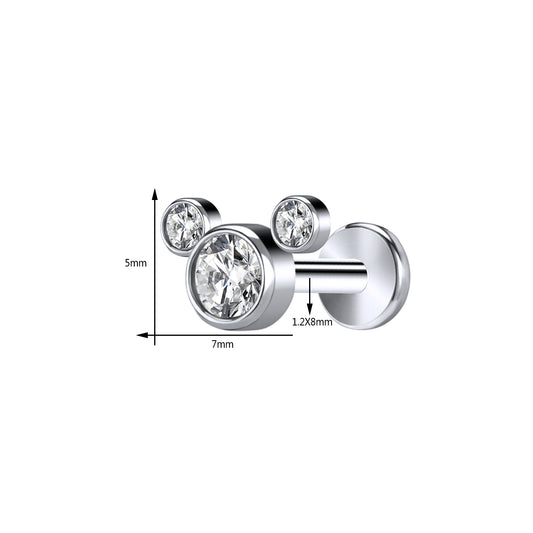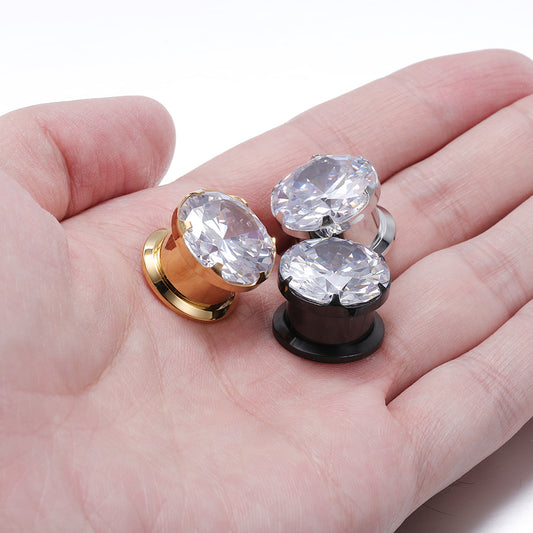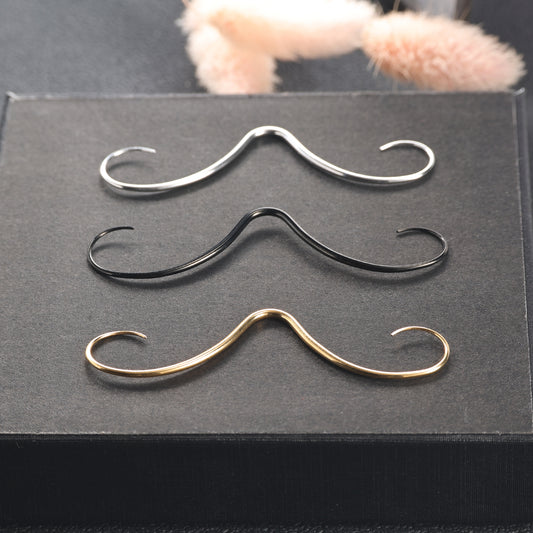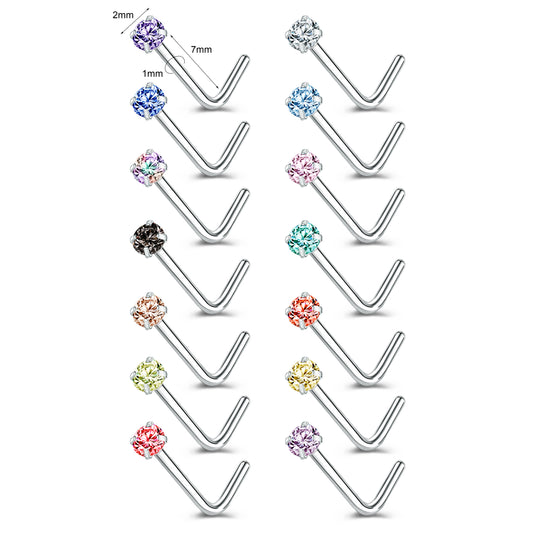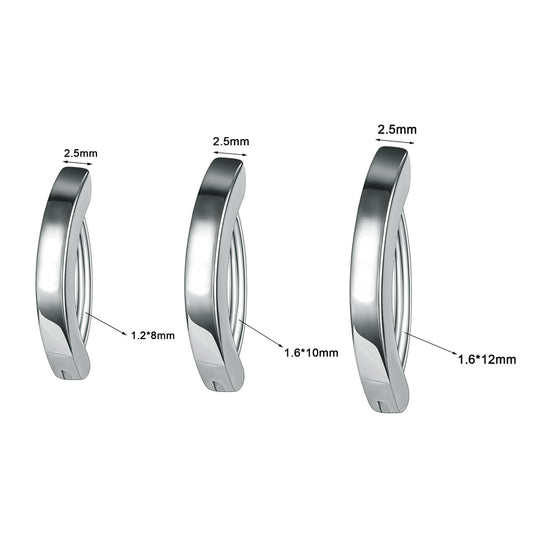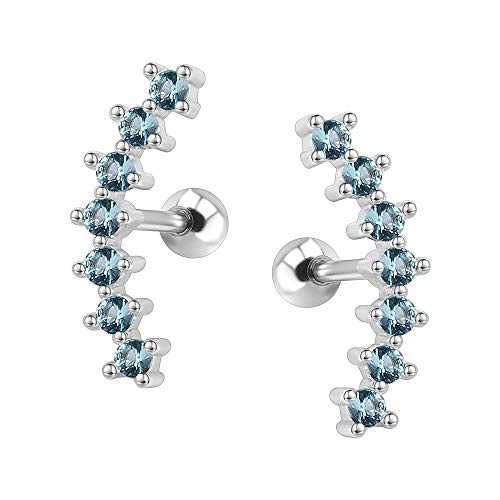
What Gauge Are Cartilage Piercings
Share
Curious about cartilage piercing gauges? Cartilage piercings, popular for their versatility and style, come in various gauges. But what exactly is a gauge? And how does it relate to cartilage piercings? Let’s explore everything you need to know about what gauge are cartilage piercings in this concise guide.
Definition of cartilage piercings
Cartilage piercings, an in-vogue method for embellishing ears, include piercing the cartilage tissue with a needle to embed jewellery. Understanding gauges in cartilage piercings is urgent for a protected and agreeable experience.
First, we should characterize cartilage piercings. They're a type of body change where the cartilage, the firm tissue in the ears, is pierced to wear jewellery. Not at all like ear cartilage piercings, cartilage piercings require more accuracy and care because of the denser cartilage tissue. These piercings have acquired fame for their stylish allure and flexibility in adornment choices.
The significance of grasping gauges in cartilage piercings. Gauges allude to the thickness of the jewellery. Utilizing the right gauge guarantees an appropriate fit and diminishes the gamble of confusion like bothering or disease. It resembles tracking down the ideal gauged shoe for your foot - solace and security matter!
Changing to why this information matters, how about we dig into security? Picking some unacceptable gauge can prompt uneasiness or even harm to the punctured region. In this way, realizing your gauge is likened to guaranteeing a smooth ride on your piercing excursion.
Factors Influencing Gauge Determination
Picking the right gauge for your cartilage piercing includes considering a few variables to guarantee an agreeable and safe experience. How about we investigate these variables exhaustively:
A. Anatomy Variations
Our ears come in various shapes and sizes, and understanding your novel life structures is pivotal in gauge determination. Cartilage thickness shifts from one individual to another, with some having thicker cartilage than others. Thicker cartilage might require a bigger gauge for legitimate fit and solace. In like manner, on the off chance that you have more slender cartilage, a more modest gauge may be more reasonable to stay away from exorbitant extending or distress.
B. Piercing Location
Where you intend to get punctured likewise impacts gauge determination. Cartilage piercings should be possible in different areas, like the helix, tragus, or conch. Every area has its exceptional life system and thickness of cartilage. For example, the helix, the external edge of the ear, commonly has more slender cartilage contrasted with the tragus or conch.
C. Personal Preference:
Individual style and stylish inclinations assume a huge part in gauge choice. A few people inclined toward more modest, daintier Jewelrys for an inconspicuous look, while others might select bigger gauges for a more intense proclamation showing up. Moreover, the sort of adornments, like studs, loops, or hand weights, can likewise impact gauge decisions.
D. Healing Considerations
One more basic element to consider is the mending system of cartilage piercings. Cartilage piercings commonly take more time to mend contrasted with ear cartilage piercings because of diminished blood stream to the cartilage tissue. During the recuperating time frame, it's fundamental to limit disturbance and advance appropriate mending. Picking the suitable gauge size can assist with working with mending by lessening the tension on the piercing site and taking into account sufficient wind stream.

What Gauge Are Cartilage Piercings?
With regards to cartilage piercings, understanding the different gauge choices is fundamental for accomplishing your ideal look and guaranteeing an agreeable fit. We should investigate the different gauge sizes accessible:
A. Standard Gauges for Cartilage Piercings:
20G (0.8mm):
- This is one of the most widely recognized gauge sizes for cartilage piercings.
- It offers a sensitive and unobtrusive appearance, making it reasonable for people looking for a more downplayed look.
- The 20G gauge is great for those with more slender cartilage or who incline toward a more modest, daintier hoop.
18G (1.0mm):
- Marginally thicker than 20G, the 18G gauge gives a smidgen greater sturdiness and presence.
- A flexible choice finds some kind of harmony between nuance and permeability.
- The 18G gauge is reasonable for different cartilage piercing areas and is much of the time picked for its strength and solace.
16G (1.2mm):
- This gauge size offers a bolder and more articulated look contrasted with 20G and 18G.
- Generally picked by people maintain that their cartilage piercings should stick out.
- The 16G gauge gives more space to inventiveness with jewellery choices, like loops and studs.
B. Non-Standard gauges:
22G (0.6mm):
- More modest than the standard 20G, the 22G gauge is great for those with exceptionally meager cartilage or who lean toward a moderate look.
- A sensitive choice adds an unpretentious bit of tastefulness to cartilage piercings.
- While more uncommon, 22G Jewelrys can in any case offer a slick expression.
14G (1.6mm):
- Thicker than the standard 16G, the 14G gauge is picked by people searching for a more striking and effective appearance.
- It's frequently chosen for cartilage piercings in bigger regions or for people who need to say something with their adornments.
- The 14G gauge takes into consideration a more extensive scope of jewellery choices, including thicker bands and free weights.
Last Words
Now that you know about cartilage piercing gauges, you're prepared to settle on informed conclusions about your piercing venture. Keep in mind, that picking the right gauge is fundamental for both solace and feel. Whether you settle on an unpretentious stud or a striking band, focus on security and cleanliness in the meantime. Talk with an expert piercer for customized exhortation and care tips.















